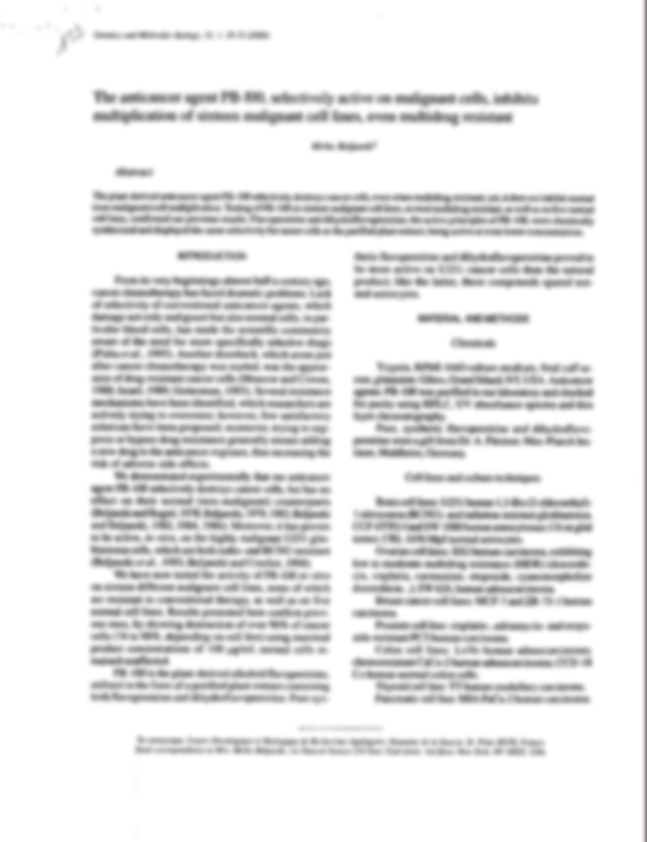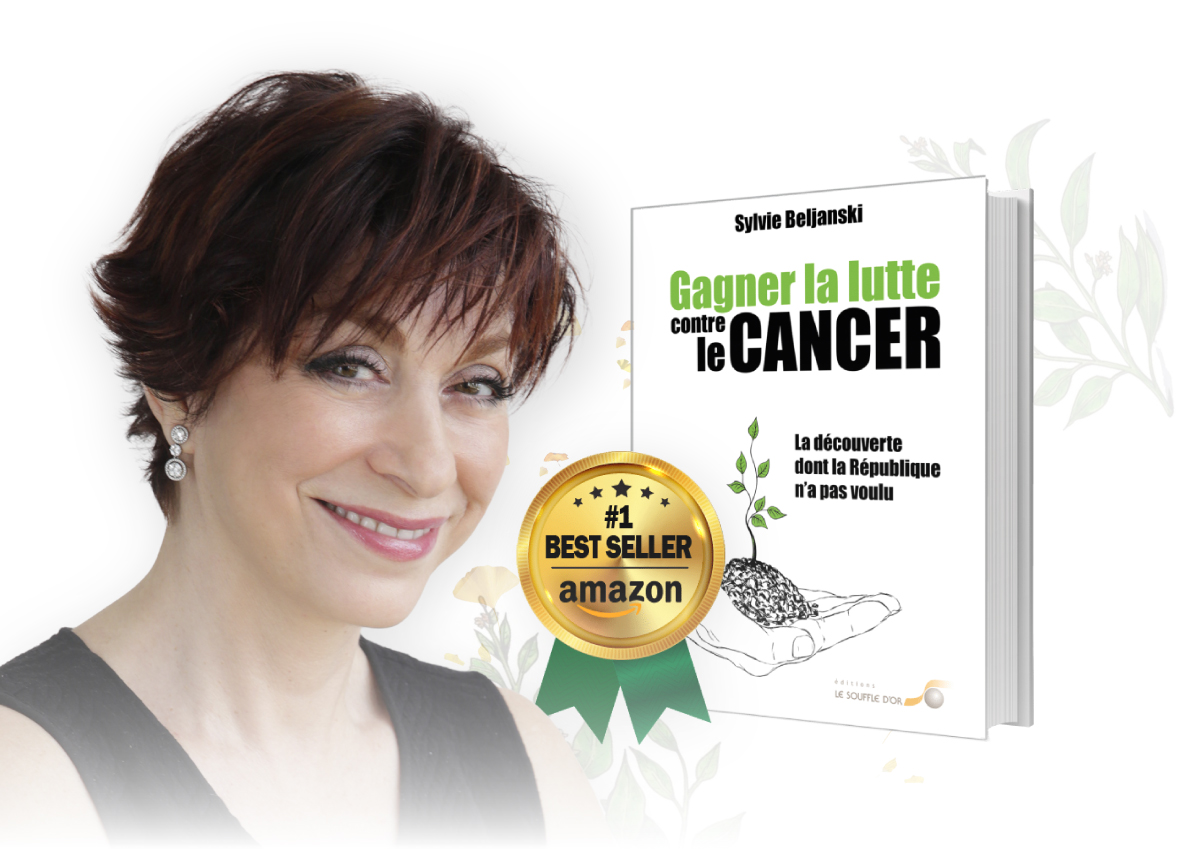Archives Publications
29 – Synthèse de peptides par un système enzymatique en présence de nucléoside – triphosphates
C.R. Acad. Sci., 1960, 250,pp.624-626.
Available in French only
ABSTRACT: Une fraction enzymatique EAA obtenue et purifiée à partir d’Alcaligenes faecalis possède la capacité d’activer l’incorporation des acides aminés dans des fragments subcellulaires de ces mêmes bactéries. Toutefois, elle semble incapable d’activer l’échange entre le PP et l’ATP en présence d’acides aminés, mais catalyse le transfert de l’orthophosphate entre les nucléosides-triphosphates et les nucléosides-diphosphates homologues.
ABSTRACT: Une fraction enzymatique EAA obtenue et purifiée à partir d’Alcaligenes faecalis possède la capacité d’activer l’incorporation des acides aminés dans des fragments subcellulaires de ces mêmes bactéries. Toutefois, elle semble incapable d’activer l’échange entre le PP et l’ATP en présence d’acides aminés, mais catalyse le transfert de l’orthophosphate entre les nucléosides-triphosphates et les nucléosides-diphosphates homologues.
28 – Identification de quatre kinases spécifiques des diphosphonucléosides dans une préparation enzymatique d’origine bactérienne
C.R. Acad. Sci., 1959, 248,pp. 1146-1448.
Available in French only
ABSTRACT: L’ensemble de ces résultats montre que la fraction EAA, par ses quatre réactions d’échange diffère de la synthétase du glutathion qui, ainsi que nous l’avons observé, n’échange que l’ATP avec l’ADP. Ceci explique aisément l’incapacité de la synthétase du glutathion à remplacer notre fraction enzymatique EAA pour l’incorporation des acides aminés. En revanche in est remarquable de constater qu’un système enzymatique impliqué dans l’incorporation d’un grand nombre d’acides aminés se montre capable d’activer le transfert du phosphore entre les quatre principaux nucléotides. Il est difficile de ne pas supposer qu’il y ait une association nécessaire entre cette activité phosphotransférasique et l’activité responsable de l’incorporation des acides aminés.
ABSTRACT: L’ensemble de ces résultats montre que la fraction EAA, par ses quatre réactions d’échange diffère de la synthétase du glutathion qui, ainsi que nous l’avons observé, n’échange que l’ATP avec l’ADP. Ceci explique aisément l’incapacité de la synthétase du glutathion à remplacer notre fraction enzymatique EAA pour l’incorporation des acides aminés. En revanche in est remarquable de constater qu’un système enzymatique impliqué dans l’incorporation d’un grand nombre d’acides aminés se montre capable d’activer le transfert du phosphore entre les quatre principaux nucléotides. Il est difficile de ne pas supposer qu’il y ait une association nécessaire entre cette activité phosphotransférasique et l’activité responsable de l’incorporation des acides aminés.
27 – Protein bio-synthesis by a cell-free bacterial system. II – Further studies on the amino acid incorporation enzyme
Proc. Nat. Acad. Sci., 1958,44, pp. 1157-1161.
Article not available online
Article not available online
26 – Protein biosynthesis by a cell-free bacterial system
Department of Biochemistry, New York University College of Medicine, NY
IV-ème Congrès Intern. Biochim. Vienne, 1958, p.49 – Résumés des commnunications.
Available in French only
ABSTRACT: Indications have been obtained for the presence ot the amino acid incorporation enzyme in the supernatant fraction from rat liver and in the precipitate obtained by acidification of this fraction to pH 5.2 (pH 5 enzymes). Highly purified amino acid incorporation enzyme from A. faecalis completely replaces the pH 5 enzymes in stimulating the incorporation of C14-leucine into protein of rat livermicrosomes. These observations show that the amino acid incorporation enzyme is involved in protein biosyntheses of both mammalian and bacterial cells.
Highly purified preparations of the A. faecalis incorporation enzyme catalyze a rapid, Mg++dependent exchange a radioactive ADP with ATP an activity which appears to be related to their amino acid incorporation activity. This finding may be of significance, since glutathione synthetase, which catalyzes the synthesis of a typical peptide, brings about a similar exchange.
ABSTRACT: Indications have been obtained for the presence ot the amino acid incorporation enzyme in the supernatant fraction from rat liver and in the precipitate obtained by acidification of this fraction to pH 5.2 (pH 5 enzymes). Highly purified amino acid incorporation enzyme from A. faecalis completely replaces the pH 5 enzymes in stimulating the incorporation of C14-leucine into protein of rat livermicrosomes. These observations show that the amino acid incorporation enzyme is involved in protein biosyntheses of both mammalian and bacterial cells.
Highly purified preparations of the A. faecalis incorporation enzyme catalyze a rapid, Mg++dependent exchange a radioactive ADP with ATP an activity which appears to be related to their amino acid incorporation activity. This finding may be of significance, since glutathione synthetase, which catalyzes the synthesis of a typical peptide, brings about a similar exchange.
25 – VII-ème Congrès International de Microbiologie de Stockholm, 1958, Symposium, II.
VII-ème Congrès International de Microbiologie de Stockholm, Sweden, 1958, Symposium, II.
Discussion not available online
Discussion not available online
24 – Protein biosynthesis by a cell-free bacterial system
Proc. Nat. Acad. Sci. Biochemistry, 1958,44, pp. 494-501..
Available in English only
ABSTRACT: Particulate preparations of Alcaligenes faecalis, consisting largely of cell membrane fragments, incorporate amino acids into their proteins. This incorporation, which appears to reflect protein biosynthesis, is driven by oxidative phosphorylation and is stimulated by an enzyme, present in the supernatant extract, which has been isolated in highly purified form. The purified enzyme is free of activating enzymes catalyzing the amino acid-dependent exchange of PP32 with ATP and the same seems to be true of the bacterial particles.
ABSTRACT: Particulate preparations of Alcaligenes faecalis, consisting largely of cell membrane fragments, incorporate amino acids into their proteins. This incorporation, which appears to reflect protein biosynthesis, is driven by oxidative phosphorylation and is stimulated by an enzyme, present in the supernatant extract, which has been isolated in highly purified form. The purified enzyme is free of activating enzymes catalyzing the amino acid-dependent exchange of PP32 with ATP and the same seems to be true of the bacterial particles.
23 – Sur la formation d’enzymes respiratoires chez un mutant d’Escherichia coli streptomycino-résistant et auxotrophe pour l’hémine
Annales Institut Pasteur, 1957, 92, pp. 396-412.
Available in French only
ABSTRACT: Dans le présent mémoire nous décrivons les propriétés d’un mutant d’Escherichia coli obtenu par sélection en présence de streptomycine. Ce mutant est caractérisé par la streptomycino-résistance et par l’incapacité de synthétises l’hemine.
ABSTRACT: Dans le présent mémoire nous décrivons les propriétés d’un mutant d’Escherichia coli obtenu par sélection en présence de streptomycine. Ce mutant est caractérisé par la streptomycino-résistance et par l’incapacité de synthétises l’hemine.
22 – Photo-restauration de bactéries dépourvues de porphyrines
Ann. Institut Pasteur, 1956, 90, pp. 127-132.
Available in French only
ABSTRACT: Molecules containing porphyric groupe do not influence the photo-restoration of E. Coli strains studied by the authors. In consequence, in the case of these strains : a) The porphyrins do not appreciably act as chromophores in the photo-restoration process. This fact should be discussed as soon as a sufficiently precise action spectrum of light on E. Coli will be available. b) The catalase and peroxydase enzymes do not appreciably participate in the photo-restoration process, which remains indefinite. We can only state that this process does not apply to lesions due to the activity of photo-formed peroxydes. So it seems that photo-restoration is very different from restoration by catalase, which is an essentially peroxydase process.
ABSTRACT: Molecules containing porphyric groupe do not influence the photo-restoration of E. Coli strains studied by the authors. In consequence, in the case of these strains : a) The porphyrins do not appreciably act as chromophores in the photo-restoration process. This fact should be discussed as soon as a sufficiently precise action spectrum of light on E. Coli will be available. b) The catalase and peroxydase enzymes do not appreciably participate in the photo-restoration process, which remains indefinite. We can only state that this process does not apply to lesions due to the activity of photo-formed peroxydes. So it seems that photo-restoration is very different from restoration by catalase, which is an essentially peroxydase process.
21 – Reconstitution in vitro de la catalase
C.R. Acad., Sci., 1955, 241, pp. 1353-1355.
Available in French only
ABSTRACT: On peut obtenir l’apoenzyme de la catalase sous forme d’extraits solubles à partir du mutant H7 d’Escherichia coli, auxotrophe pour l’hémine, dépourvu d’activité catalasique. L’addition d’hémine à l’apoenzyme permet la reconstitution in vitro de la catalase active. Le mutant isolé permet d’effectuer une résolution “physiologique” de la catalase.
ABSTRACT: On peut obtenir l’apoenzyme de la catalase sous forme d’extraits solubles à partir du mutant H7 d’Escherichia coli, auxotrophe pour l’hémine, dépourvu d’activité catalasique. L’addition d’hémine à l’apoenzyme permet la reconstitution in vitro de la catalase active. Le mutant isolé permet d’effectuer une résolution “physiologique” de la catalase.
20 – Photorestoration in porphyrin-less mutants of Escherichia coli
Microbial Genetic Bulletin, E. Witkin, 1955 – Résumés
Document not available online : “Photorestoration in porphyrin-less mutants of Escherichia coli”
Document not available online : “Photorestoration in porphyrin-less mutants of Escherichia coli”





